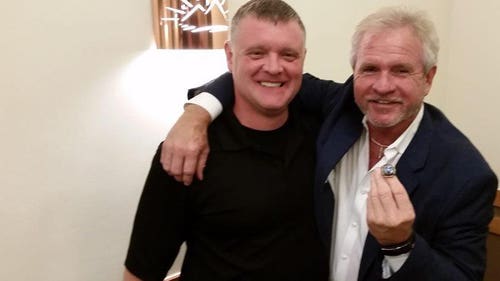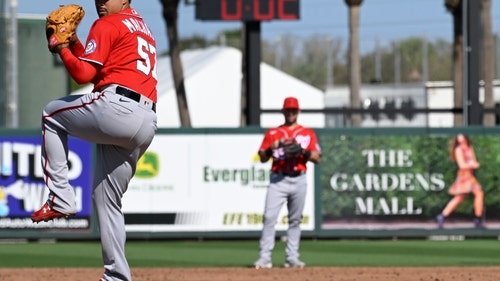
Philadelphia Phillies: Young Closer's Trade Under Review
Giles Found His Way to the Ninth Inning for Houston. Photo by Charles LeClaire – USA TODAY Sports.
With symbolic renewal, young stars warm us up in March and take the diamond in April as the 2017 Philadelphia Phillies after an offseason of deals and signings to go with successful promotions and acquisitions from 2016.
Highs and Lows:
Before the old pro in any field can claim that status via experience, knowledge and wisdom, he must earn battle scars from earlier days.
On December 9, 2015, the news broke about the seven-player swap between the Phillies and the Houston Astros: Ken Giles and Vince Velasquez were the main pieces. The reaction here was surprise because Giles had only projected a promising future and required a hefty asking price. On the other hand, Velasquez had a big upside with some medical concerns but worked only 33 innings at Double-A and 55 2/3 frames with Houston in 2015. Speed bump! The Phils didn’t like the physical report of one player.
Living by the radar gun, Giles was to be the Astros’ dominant closer for many summers, but he struggled in his first two months there. Locally, the Philadelphia Phillies were off to a start of seven games over .500 before the league gave them serious consideration, and the news about Giles took a back seat to the hometown 25. One-hundred-miles Giles. Who? Perhaps, the pressure associated with playoff hopes affected his early outings, and it snowballed into three hurlers competing for those ninth-inning outs.
IN OTHER WORDS:
“Everybody has something to prove each year. Everybody has a responsibility in this game. Even the batboy.” – David A. Ortiz
Reviewing the scouting reports, general manager Matt Klentak decided not only to pull the trigger on the Giles deal but also to slot him in the rotation if he had a solid spring. But while Velasquez and Adam Morgan were in a so-called competition for the final spot on the five-man staff, Klentak revealed his plans before their last outings. In other words, uniformed management said one thing and the front office did another. But the decision-makers all agreed to use the flamethrower only as a starter: He had previously worked in the rotation and the relief corps at Double-A and the majors.
Will 2017 Be a Big Year for Velasquez? Photo by Jayne Kamin – Oncea-USA TODAY Sports.
Before three August debacles, Velasquez had a 3.33 ERA on August 4, which then topped out at a 4.31 ERA. However, he ended the 162 on a high note with a solid seven-frame performance and a 2.25 ERA for his final two starts. What is possible in ’17 for Velasquez? A breakout campaign.
Replacing outfielder Derek Fisher in the swap was right-hander Mark Appel, and he bears the stigma of a number-one draft pick overall who didn’t succeed. But he claimed that label was a burden he was now free of, and he had a solid April before season-ending injuries in May. On the other hand, Fisher went from Single-A Advanced in ’15 to Triple-A: Houston quickly advances their prospects. Two questions. Are the Astros’ personnel policies the reason Cole Hamels nixed the trade? And are some of these pieces from that rejected deal?
Appel:
In March 2016, pitching coach Bob McClure and manager Pete Mackanin had a powwow after watching Brett Oberholtzer throw a few bullpens. They had doubts and talked about using him as the long man out of the pen. Oberholtzer, unfortunately, didn’t have a full year in Philly.
FOOD FOR THOUGHT:
“If I’m honest with you, you might not like me for a day or two. But if I lie to you, you’re going to hate me forever.” – Joseph Maddon
Appel Could Surprise a Few Fans in 2017. Photo by Mark J. Rebilas – USA TODAY Sports.
As for the others, righty Thomas Eshelman was the 46th overall selection in the 2015 MLB Draft and only had 10 1/3 professional innings in the low minors. He had success with the Single-A Advanced Clearwater Threshers (a 3.34 ERA for 59 1/3 frames) before struggling with the Double-A Reading Fightin Phils (a 5.14 ERA for 61 1/3 innings). Meanwhile, right-hander Harold Arauz had a 3.18 ERA for 99 innings with the Single-A Lakewood BlueClaws. And, finally, infielder Jonathan Arauz, not yet 19, averaged .249 for his second year in rookie ball.
To sum up, the basic concept was that five arms gave the red pinstripes decent odds of acquiring one starter now and a second hurler for the rotation eventually. In other words, Velasquez and Oberholtzer were the now and Appel, Eshelman and Arauz were tomorrow’s possibilities. That stated, an evolutionary process takes place over a baseball career if it extends for nearly 10 years. So, when you look at a player’s annual stats, what are you really seeing? A snapshot in time.
After Faltering Again, Oberholtzer Says the Magic Words into His Glove. Photo by Eric Hartline – USA TODAY Sports.
The Numerical Bible:
This review is not a sabermetrics article, which means no heavy statistical analysis. But because some readers rely on stats, this is only a reference: no reason to articulate the importance of these numbers.
These numbers do not include any postseason activity.
Pitching:
Triple-A Pitching:
Double-A Pitching:
Single-A+ Pitching:
Single-A Pitching:
Triple-A Hitting:
Double-A Hitting:
Rookie-ball Hitting:
More from Call to the Pen
This article originally appeared on











